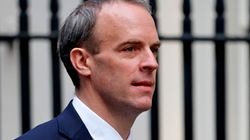Covid-19 infections in England fell by 30% during the country’s second lockdown, according to the latest findings of a major coronavirus study.
Between November 13 and 24, more than 105,000 volunteers were tested for the virus as part of an ongoing study by Imperial College London and Ipsos MORI to work out infection levels in the general population.
According to the study, between these dates 96 people out of every 10,000 were infected with Covid-19 – down from 132 per 10,000 between October 26 and November 2.
There was an even more dramatic drop in infections during lockdown in the north of the country, with the prevalence of Covid-19 dropping by more than 50%.
In the North West, the rate fell from from 2.53% to 1.08%, while the North East saw the rate drop from 1.88% to 0.72%.
England’s second countrywide lockdown – which was introduced in a bid to get spiralling coronavirus rates under control – began on November 5.
Researchers found that between November 13 and 24, around the midpoint of the lockdown, the virus was halving every 37 days in England, with the national R-rate estimated to be 0.88.
However, researchers found that prevalence remained high in the East Midlands, dropping only to 1.27% from 1.31%, and the West Midlands, where the rate only fell 0.01% to 1.55%.
It means that for every 10,000 people in the area, 155 have the virus – the highest figure in the country.

Health secretary Matt Hancock said that the UK had been “able to get the virus more under control” thanks to the “huge efforts of the public over the past few weeks”.
“This latest data shows we must keep our resolve and we cannot afford to take our foot off the pedal just yet, despite the encouraging fall in cases and progress on vaccines.
“The next few weeks and months are the busiest time of year for our NHS, so it’s vital we all continue to follow new local restrictions, wash our hands, wear a face covering and observe social distancing.”
Meanwhile Professor Paul Elliot, director of the programme at Imperial, said that data showing a significant drop in infections in areas that were previously worst affected “suggest that the tiered approach helped to curb infections in these areas and that lockdown has added to this effect”.
A tougher version of the three tier system of restrictions is set to come into force on Wednesday, when lockdown ends.
Under the new scheme, 99% of England will enter tier two or three, with only the Isle of Wight, Cornwall and the Isles of Scilly set to go into tier one.
Don’t Know The Level Of Restrictions In Your Area? Use HuffPost UK’s Covid-19 Tier Checker
Boris Johnson is facing a rebellion from Tory MPs over the new, beefed up measures. On Saturday night, the PM wrote to MPs to tell them the tier system has a “sunset” expiry date of February 3.
However, foreign secretary Dominic Raab refused to rule out a third national lockdown when speaking to BBC One’s The Andrew Marr Show on Sunday, saying there was a “risk” of a third wave “if we don’t get the balance right”.

